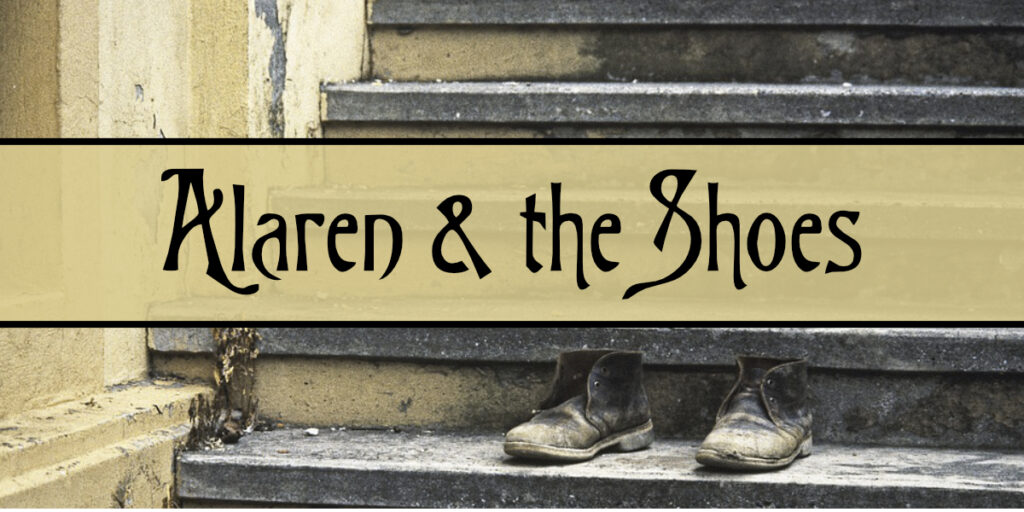(Note: This tale is part of the fictional Stories of the Third Brother, an ancient book of folktales about Alaren in Ari Ara’s world. Each folktale teaches a lesson in waging peace using true stories as a spark of inspiration for the tales of courageous nonviolent action. You can find the stories in The Adventures of Alaren here>> )
How could he remind the king of the true cost of war?
Alaren strode down the street, angry and worried. His brother, King Marin, was visiting this mid-sized city in the eastern foothills and he had come to stop his headstrong sibling from starting another war.
“Have you already forgotten the sons and daughters killed in your last war?!” he had just shouted at his brother, moments before he stormed out the door.
Alaren winced. He rarely lost his temper – it didn’t seem to do much good when he did – but Marin was planning to make war on their brother Shirar again. He was preparing to attack this summer over nothing more than the insults Shirar had sent in his last letter.
“He’s been calling you an idiot since he was six,” Alaren had pointed out as Marin had swept everything off the table in a fit of rage.
“Yes, well, I pounded him then and I’ll do it again!” Marin swore.
“If you want to get into a fistfight with your brother, that’s one thing – a terrible thing – but don’t go dragging other people into a war,” Alaren begged.
But that was exactly what Marin raged about doing . . . again. Alaren rubbed his face with his palm and felt the dampness of tears. Just yesterday, he had comforted a friend of his, a widow who had lost her husband and son in the last war, as she wept over a pair of her son’s baby shoes.
Marin should see that mother’s tears, Alaren thought grimly. Marin should see the rows of shoes by the door that the widows dusted in their housekeeping rounds, unable to get rid of the hope that, one day, their loved ones would return and fill those shoes.
Alaren skidded to a halt in the street.
Those shoes, he thought, are precisely what Marin should see.
He turned around, crossed the city, and knocked on the door of his widowed friend.
“I need to borrow your shoes,” he said gently.
Two days later, the river mist lifted upon a strange sight . . . the street outside Marin’s lodgings was filled with shoes, large and small, women’s, men’s, children’s, dancing heels and sturdy work boots: shoes whose occupants would never again dance, stride, pace, or climb in them.
When Marin came to the gate, he saw thousands of empty shoes paired and pointing at him like an army of ghosts. Behind them, lining the edges of the street, stood the mothers, fathers, sisters, wives, and others who had brought their loved ones’ shoes. Young widows held their fatherless babes. Masters of trades carried the tools of lost apprentices in their hands, reminders of the long-term costs of war. Old people tottered up, clutching each other’s arms; their wrinkled faces begged to know who would care for them in their old age.
“We don’t want war,” Alaren said, staring at his brother until Marin dropped his eyes, ashamed. “Promise them. Look into the eyes of your people and promise them that you will not sacrifice their loved ones to your quarrel with Shirar.”
Marin promised.
By Alaren’s reckoning, thousands of lives were saved by preventing that needless war. The people picked up their loved ones’ shoes and took them home. Tears were shed. Candles were lit on altars. Grief and mourning took the time they needed. But eventually, the turn of the year healed wounded hearts. New babies were given old booties. Growing youths stepped into old apprentices’ work boots. New lovers met with tapping shoes and dancing heels. No one could ever replace the lost ones, but together, people eased their sorrows and carried life forward step by step.
~ The End ~
_______________________________________
Behind the Story – Real Life Inspiration
The fictional story of Alaren and the Shoes is based on several stories of creative action to stop war and violence that have used shoes as a silent protest. A demonstration in Washington, DC, against gun violence and mass shootings brought 7,000 pairs of children’s shoes to lay upon the grass outside the Capitol Building to memorialize every child killed by gun violence since the Sandy Hook Massacre in 2012.
On the banks of the Danube River in Budapest, Hungary, a statue of shoes serves as an eternal reminder of the massacre of Hungarian Jews during WWII. The people were told to remove their shoes as they stood in a line on the riverbank. Then they were shot, their bodies falling into the river.
Other demonstrations have used a variety of personal objects to represent lives lost. An effort organized by Voices for Creative Nonviolence called “34 Backpacks” commemorates the deaths of Yemeni children killed in an attack on August 9th, 2018. Peace activists place the backpacks in public spaces or on the steps of government buildings in a haunting reminder of the price of war.
These kinds of protests are powerful and evocative. They have been used over and over again to make a strong point.
(Note: This tale is part of the fictional Stories of the Third Brother, an ancient book of folktales about Alaren in Ari Ara’s world. Each folktale teaches a lesson in waging peace using true stories as a spark of inspiration for the tales of courageous nonviolent action. You can find the stories in The Adventures of Alaren here>> )
